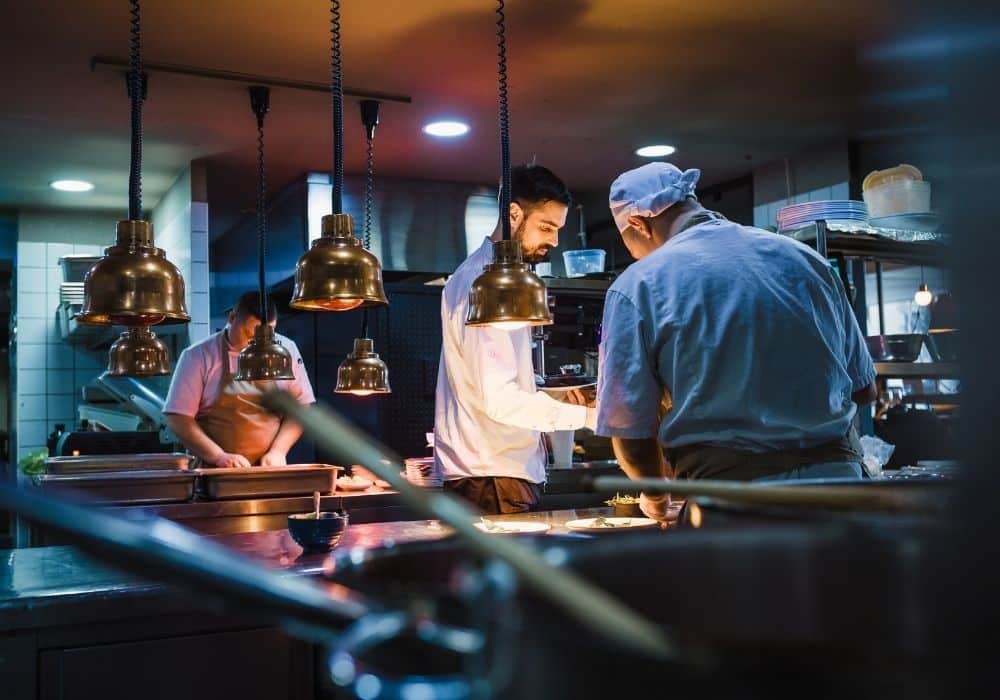Dark Kitchens Shine a Light on Future Profitability for Restaurants
Given diminishing returns, shrinking margins and skyrocketing rents, it’s no wonder some restaurateurs have been on the lookout for a new way to bolster their bottom lines. And so, when service on-demand food apps such as Deliveroo, Menulog and UberEats arrived on the scene, the market was ripe for change and disruption.
Enter the dark kitchen. Also known as ‘ghost kitchens’, ‘cloud kitchens’ and ‘delivery-only kitchens’, the number of these commercial spaces is growing. Often tucked away in industrial areas but with strategic access to densely populated and lucrative city locations, they are designed to be low-cost and high-turnover, and represented a growing trend even before the pandemic hit.
But over the past 18 months the business model has found even more reasons to thrive, servicing the boom in home-delivered food across Australia as the population deals with intermittent lockdowns and in-house dining density uncertainties.
Why dark kitchens offer good value
Deliveroo, with its 10,000 self-employed riders servicing 13,000 ‘partner’ restaurants, operates two delivery-only kitchens in the Melbourne suburbs of Collingwood and Windsor. Heading them up is a former restaurateur from the UK, Tim Talbot, who says the sites are no different to a regular restaurant, except they don’t have a front of house and are dedicated to delivery.
“In some cases, we’re able to do pickup as well,” says Talbot. “So, it’s similar to a takeaway in that way. But what we’re doing is collating a whole host of restaurant operators in one site.”
In Collingwood, various restaurants occupy nine six-by-three-metre pod kitchens, with the infrastructure, including extraction systems and cooking equipment, provided by Deliveroo. Windsor similarly has room for five kitchens but in an open-plan layout. The dedicated environments and streamlined ordering systems allow chefs to concentrate on quality and reduce delivery times, making for better quality products, says Talbot.
Interestingly, restaurants at Deliveroo’s facilities are invited to join them and pay a commission on their orders rather than rent. “We have very flexible contracts,” says Talbot. “What we’re doing is we are literally taking the stress out of everything. So, we’re paying the rent, we’re paying the rates, we’re paying the utilities, we’re building the site, we’re providing the equipment.
“Essentially, all we’re asking our restaurant partners to do is provide their chefs, their recipes and their ingredients. They operate as they would do in their restaurant, but we do everything else for them.”
Talbot says that although the pandemic resulted in increased business, their model worked seamlessly – even when Greater Melbourne went into lockdown. Interest from restaurateurs in their communal kitchens has only grown.
“We’re very strict around who we work with,” he says. “We want to ensure that we’re working with the people who are ready to create the best possible experience for themselves and our customers.”
Restaurants in their delivery-only kitchens include big operators such as Chicken Treat, with its 60 sites across Western Australia, Sydney’s Fishbowl chain and more than a dozen (even solo) operators.
So, does this mean Deliveroo’s concept is likely to crop up elsewhere in Australia? “Yeah, I think it’s something that will be on the cards at the right moment,” says Talbot. “I think right now we’re very focused on making sure we’ve got the model to the best possible place it can be. And then, once we can prove that it’s something that will work across the country, I think at that point we will then look at the rollout.”
Efficiency benefits
In North Melbourne, ChefCollective’s General Manager Sam Robertson has just celebrated the official opening of the company’s second dark kitchen site. He says “almost all” of its 26 kitchens were snapped up by operators, including Carl’s Jr and 400 Gradi, prior to launch.
Robertson says the company already has a 29-kitchen facility in Brisbane, which has its own robot collecting orders. There are plans to open new sites in the Melbourne suburb of Abbotsford by the end of the year and a North Sydney facility in early 2022.
ChefCollective’s model differs in that restaurants pay rent for their dark kitchens, although contracts are short to allow maximum flexibility. But, as Robertson notes, with a national home delivery market worth $800 million a year and growing by 50 per cent per annum over the past five years, confidence is high.
“We think they are here to stay and just increase into the future with technology and the competition in the delivery market,” says Robertson. “Ideally, we’ll make the costs associated with this type of business go down, from the restaurants’ and consumers’ perspective.
“The big thing for us is by having, say, 26 kitchens in one location, we can introduce a bunch of other efficiencies that allow costs to be reduced across the board, which you couldn’t do in individual restaurants across the city.”
-
Stay up to date with the latest news, industry insights and Fine Food Australia updates.
- Subscribe
